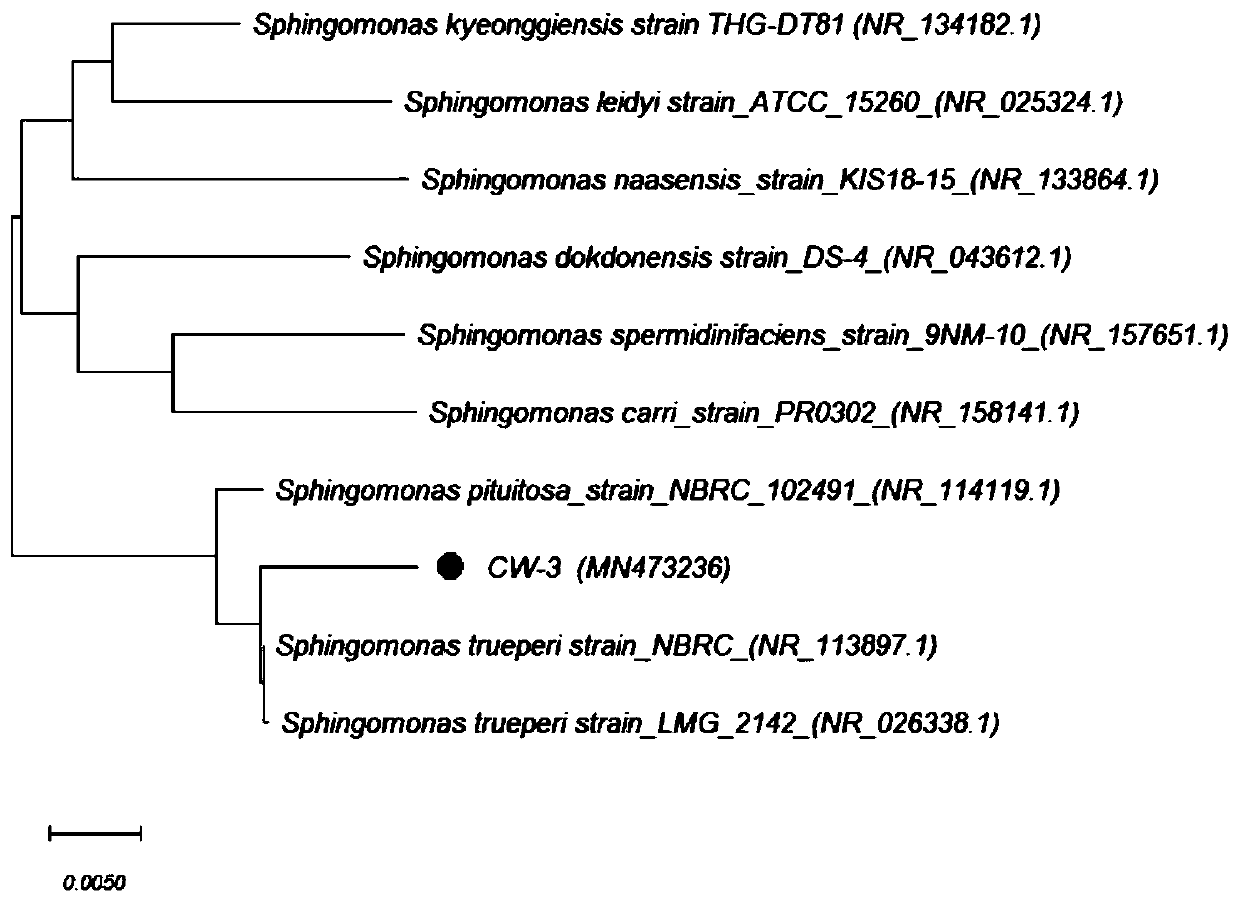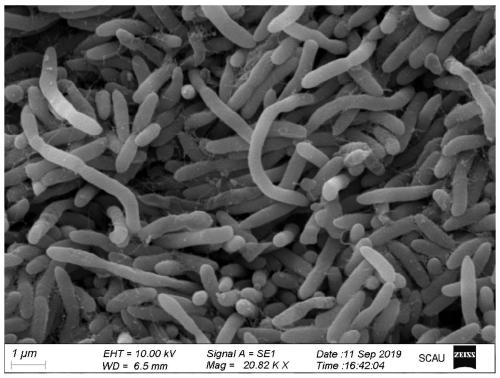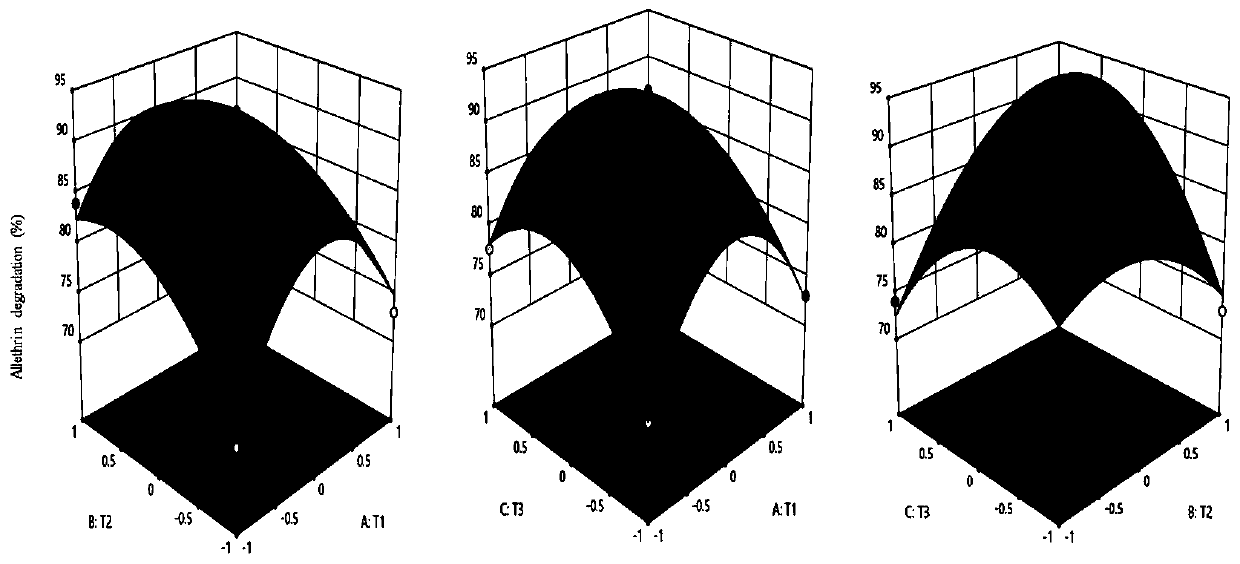Pyrethroid insecticide residue degradation strain and application thereof
A technology for pyrethroids and insecticides, which is applied in the field of pyrethroid insecticide residue degradation strains, can solve the problems of not being able to meet the actual needs of chemical pesticide residue pollution biodegradation, not degrading allethrin, etc., and achieve The effect of good biodegradation effect
- Summary
- Abstract
- Description
- Claims
- Application Information
AI Technical Summary
Problems solved by technology
Method used
Image
Examples
Embodiment 1
[0052] Isolation and Identification of Example 1 Bacterial Strain CW3
[0053] 1. Isolation and screening of strains
[0054] (1) Sample: collected from activated sludge near a chemical plant in Guangxi Province.
[0055] (2) The separation and screening method adopts the enrichment culture method, as follows:
[0056] Take 5g of activated sludge sample and add it to 50mL basal medium. At the same time, add the mother liquor of allethrin (acetone is the solvent) so that the final mass concentration of allethrin is 50mg / L, and degrade it at 30°C and 200r / min on a shaking table Bacterial enrichment culture. After culturing for 7 days, transfer to the second batch of MSM medium containing 100 mg / L allethrin according to the inoculum size of 10%. After culturing under the same conditions for 7 days, transfer to MSM containing 200 mg / L allethrin according to 10% inoculum size, and continue culturing for 7 days. By analogy, the mass concentration of allethrin is continuously dou...
Embodiment 2
[0061] The preparation of embodiment 2 bacterial strain CW3 degrading bacterial agent
[0062] 1. The production process of using the above-mentioned bacterial strain CW3 to prepare the degrading bacterial agent is as follows: slant strain—shake flask seed liquid—seed tank cultivation—production tank fermentation—product (dosage form can be suspension or powder).
[0063] 2. The specific method is as follows:
[0064] (1) Activate the bacterial strain CW3 on the LB solid plate, inoculate it on the inclined surface of the LB test tube for later use.
[0065] (2) Inoculate the test tube seed of strain CW3 in a 1000mL shake flask containing 250mL LB medium, shake at a constant temperature of 30°C to the logarithmic phase, and inoculate the obtained bacterial solution into a seed tank, which contains sterilized seeds Culture medium, the filling volume is 70%. Inoculate the cultivated shake flask bacterial liquid with 10% inoculum volume into the seed tank with 70% liquid volume,...
Embodiment 3
[0067] Embodiment 3CW3 inoculum optimal degradation process condition
[0068] 1. Carry out a single factor degradation test of the CW3 bacterial agent, and measure the degradation rate of the CW3 bacterial agent by sequentially changing the factors that affect growth and degradation, such as temperature, pH value, degradation concentration, inoculum volume, liquid filling volume, oscillation rate, etc. Determine the key factors affecting the degradation rate of CW3 inoculum.
[0069] Utilize Design Expert 12.0 software to carry out experimental design (table 1) according to the principle of response surface method Box-Behnken design, to influence the key factor pH value (X 1 ), temperature (X 2 ) and degradation concentration (X 3 ) is the independent variable, and the allethrin residue is the response value (Y 1 ) to establish a multiple quadratic regression equation.
[0070] According to the multiple quadratic regression equation for drawing analysis, the response surf...
PUM
 Login to View More
Login to View More Abstract
Description
Claims
Application Information
 Login to View More
Login to View More - R&D
- Intellectual Property
- Life Sciences
- Materials
- Tech Scout
- Unparalleled Data Quality
- Higher Quality Content
- 60% Fewer Hallucinations
Browse by: Latest US Patents, China's latest patents, Technical Efficacy Thesaurus, Application Domain, Technology Topic, Popular Technical Reports.
© 2025 PatSnap. All rights reserved.Legal|Privacy policy|Modern Slavery Act Transparency Statement|Sitemap|About US| Contact US: help@patsnap.com



